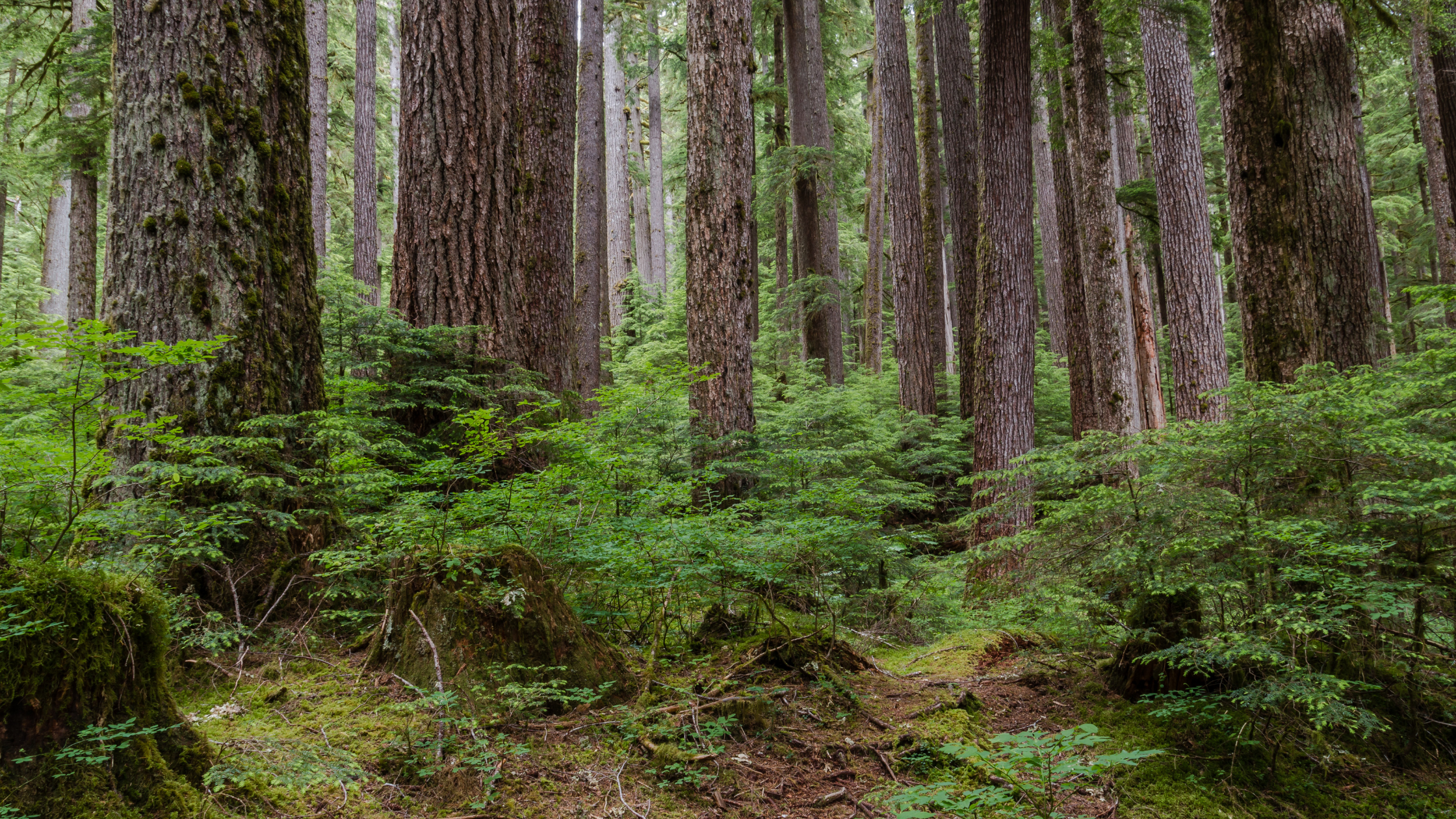Biden Administration Unveils Old Growth Inventory
Last year the Biden administration announced Executive Order 14072: “Strengthening the Nation’s Forests, Communities and Local Economies.”, which tasked the Forest Service and Bureau of Land Management with defining and inventorying old growth and mature forests on federal lands. The order cited the importance of old growth’s carbon sequestration and storage for climate mitigation as well as the cultural significance of old growth forests. FLA urged the agencies to carefully consider this approach.
This Earth Day, the administration announced the completion of the old growth and mature forests inventory, as well as a notice of proposed rulemaking requesting information on how best to manage these identified forests for climate resiliency.
Below we have answered a few common questions about the administration’s approach to old growth and the recent inventory.
How did the agencies define old growth and mature forests?
The scientific community has never reached a consensus on a single definition of “old growth” forests, although the Forest Service did adopt a generic definition in the late 1980s to recognize the forest type. For this inventory, the agencies considered various definitions of old growth that have been used in different settings over the past several decades to create a broad definition framework that provides flexibility for different regions.
“Mature forests” were more difficult to define because they can greatly vary based on age, geographic location, forestry type, and other characteristics.
You can read more about the narrative frameworks and working definitions of “old growth” and “mature forests” in the agencies’ technical report.
What lands did the inventory consider, and how much old growth did they find?
The inventory focused solely on National Forests and BLM lands, which make up about 1/5 of the nation’s forestland. The inventory did not include National Parks, wildlife refuges, tribal lands, private lands, or lands owned by any other state or federal agency.
In total, the agencies inventoried almost 178.5 million acres of forestland. Of those acres, over 80.1 million acres are considered mature, and over 32.6 million acres are considered old growth. That means that about two-thirds of Forest Service and BLM lands are considered to be old growth or mature forests, much more than the agencies were likely anticipating.
In terms of carbon sequestration, how does old growth compare to other forest types?
Although old growth forests do provide climate benefits, studies show that actively managed, multi-age, dynamic forests can optimize carbon sequestration. Actively managed forests reduce the risk of massive carbon-emitting wildfires that have often plagued unmanaged federal lands. Moreover, products made from harvested timber can store carbon for decades.
Check out more information about this subject from the National Council of Air and Stream Improvement.
There is an anti-logging narrative surrounding the old growth discussion that asserts the idea that if we cut old growth or mature trees, we are accruing a “carbon debt” – the carbon sequestration and storage potential of that tree is lost, and it will not be recovered until the tree grows back to maturity. This narrative fails to take into account that young trees grow rapidly and sequester more carbon than old growth forests covering the same area. It also fails to take into account the carbon is stored in long-lived wood products.
The focus is on federal lands – why does this matter to private landowners?
Although this inventory focuses on federal lands, there can and will be very real impacts to private lands, particularly when it comes to the administration’s inclusion of mature forests. While old-growth may not be as common on private lands, many landowners do allow their forests to reach maturity for that tree type, region, etc. before harvesting in order to reach the best market value. If old growth and mature forests are being preserved in the name of climate mitigation and carbon sequestration, companies may not want to make products from wood of a certain age harvested from certain regions. Because of public perception, consumers may not want to purchase products that are made from old growth or mature trees. It will not matter if the timber came from public or private land – the perception of old-growth or mature trees will carry the same weight across ownership types and result in market constraints for all landowners.
Moreover, when agencies begin to define mature forests, they are opening the door for those definitions to be utilized in future regulations that could impact private lands, such as endangered species listings that aim to limit harvest on forests that the agency deems to be “mature”.
FLA is working with the Federal Forest Resource Coalition and other partners to remain engaged on this issue and provide the private landowner perspective.
More helpful links and resources to navigate this topic below:
- Biden-Harris Administration Announces New Steps for Climate Resilience and Forest Conservation
- Mature and Old Growth Forests Report
- Mature and Old Growth Forests Map
- Advanced Notice of Proposed Rulemaking to Build Forest Resilience
- Federal Forest Resource Coalition Statement on Mature and Old Growth Forests
- AP News Coverage: US Plans New Forest Protection, Issues Old Growth Inventory
- Healthy Forests Healthy Communities: Biden Report: No Shortage of Old Growth on Federal Lands
- FLA Asks Agencies to Carefully Consider Approach to Conserving and Defining “Old Growth”
- Society of American Foresters Old Growth Briefer
- How Much U.S. Forest Is Old Growth? It Depends Who You Ask.
